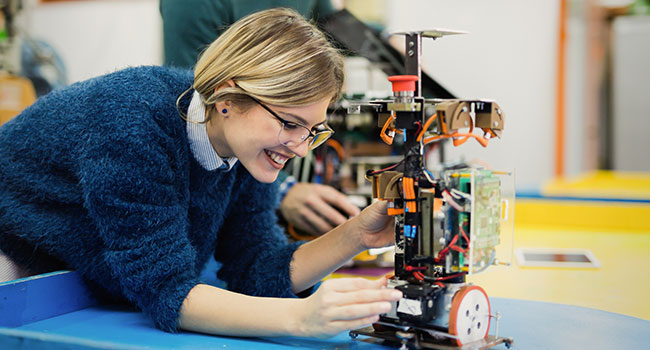Science and Technology Australia has released its major research report: STEM Career Pathways, which was commissioned by Australia’s Chief Scientist in 2023 to consider the barriers to STEM career pathways and search for solutions to enable opportunities to develop Australia’s future science, engineering, technology, and mathematics (STEM) workforce.
With almost 3,500 survey respondents coming from within and around STEM occupations and industries, the findings of the report are quite revealing and reflect common themes and long-standing views expressed in recent years.
Ai Group has identified some key findings of the report that might be relevant to members, these include:
- STEM workers have a positive view of their career prospects. 64% of people with STEM qualifications considered their career prospects ‘very good’ or ‘excellent’. Only 9% felt their career prospects were poor.
- Employers value their employee’s STEM qualifications. 77% of people in the private sector said employers valued their STEM qualifications.
- STEM skills are increasingly used in a wide variety of occupations and STEM degrees prepare people well for any job. This applies particularly in jobs that require critical thinking and complex problem solving – and many jobs now make more direct and intensive use of STEM skills.
- STEM skills are not always understood by employers or commutated effectively by STEM graduates. Graduates can struggle to demonstrate, and employers struggle to identify, how core technical and discipline-specific skills, knowledge and experience gained in university study or research can be applied in a wide array of workplaces.
- STEM workers want to use their STEM skills and have these skills valued in their jobs.
- Most STEM workers have access to training and professional development. 90% of people said they had taken up opportunities to do training or professional development. 85% of people surveyed said their employers supported staff to do formal training and/or professional development – but in some cases these opportunities were not offered to people on short-term contracts or part-time workers.
- Financial constraints can impede access to work integrated learning. A major barrier identified was the cost – being unable to continue in paid work – to students when undertaking placements.
- Mentoring is an effective career support, but is only accessible to some STEM workers. Nearly 20% of people with STEM qualifications currently had a mentor and nearly 80% of people found it beneficial.
- Women are less likely to have permanent full-time work, and more likely to be on fixed-term contracts. 58% of women were on permanent full-time contracts and 31% of women were on fixed-term contracts.
- Women in STEM careers are carrying major workloads both at work and at home. Women doing 30 or more hours unpaid domestic work in a week are also averaging a 40-hour week in their paid jobs in STEM.
- Job insecurity is a barrier to retention in STEM careers.
- Large companies should lead the way in diversity and inclusion.
Work-integrated learning pathways were found to be under used in jobs requiring higher education qualifications when compared to vocational education and training (i.e.: apprenticeships). A concern noted by the report was that in some instances, higher education STEM degrees (like engineering) provided mostly theoretical and very little practical instruction. A recommendation of the report is to expand work-integrated learning programs that offer ‘twin track’ options to do both a degree and a vocational apprenticeship concurrently. This is otherwise known as an degree apprenticeship.
The report affirmed the importance of work-based and work-integrated learning practices as being critical to developing employability skills, applying technical skills, and preparing for the workforce. The report also acknowledges that while placements can be hard to run and organise (i.e.: supervision) that once engaged, the majority of employers are keen to continue hosting students and that placements are an effective solution to give STEM graduates experience to prepare for the workplace.
To read the full report, click here.
